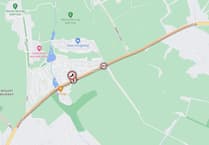A painting on sale in a London auction house proves there was a predecessor to the Laxey Wheel.
Manx National Heritage made this discovery when a selection of watercolours from a gentleman’s tour of the British Isles went on sale.
One of these was labelled as the Laxey Wheel.
Closer inspection revealed that this was not the Lady Isabella, though the location in the Glen Mooar valley was accurately depicted.
It’s believed that the painting shows the pre-cursor of the world-famous waterwheel, says MNH.
Curator of art and social history Matthew Richardson said: ‘When I first saw this I was immediately intrigued; not wishing to get my hopes up too early I consulted a number of colleagues including renowned Laxey expert Andrew Scarffe BEM.
‘All confirmed what I was thinking, that this was a portrayal of the original wheel, previously only known as a silhouette in the distance in another painting.
‘This new picture shows us how that first wheel worked in great detail, and it adds enormously to our understanding of the site.
‘Clearly, the Lady Isabella did not arrive fully formed in the mind of the designer Robert Casement.
‘Instead, he drew on certain elements of the previous wheel, but altered and improved others.
‘It may even be that a whole section, the rod duct, was carried over from that first wheel.’
As well as undertaking ‘extensive and painstaking’ work to preserve the physical structure of the historic sites under its care, MNH says it is striving to deepen its understanding of those sites and their place in Manx history.
The painting, which dates from around 1840, will now become part of the art collection which is held on behalf of the Manx people by MNH.
Designed by Victorian engineer, Robert Casement, the Laxey Wheel was built to pump water from the depths of the Laxey mines using water from Glen Mooar to power the wheel.
MNH said: ‘The impressive 22.1 (72.6 feet) diameter structure found immediate popularity and has remained one of the island’s most iconic and dramatic attractions for over 150 years.
‘When the Laxey mine closed for the last time in 1929, the Laxey Wheel stopped and was abandoned.
‘In December 1937, Lonan man, Edwin Kneale, felt he could stand by no longer. Recognising the wheel’s value, and with the primary aim of saving it for future generations, he leased the wheel from its private owner and set about repairing and caring for it. Aged 32 at the time, he risked his livelihood to save Lady Isabella from demolition.’
The wheel was put up for auction in October 1946, but Mr Kneale bought it before the sale and started to complete refurbishment.
MNH recently completed the first phase of an extensive conservation programme to the Lady Isabella. The next phase aims to conserve the wheel’s rod duct and T-Rocker.




